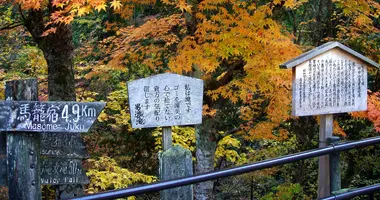Shodo Japanese Calligraphy 書道
- Published on : 29/10/2020
- by : SR
- Youtube
In Japanese, shodo literally means “the way of writing’. More than just an aesthetic, it’s an expression of the inner spirit of the calligrapher.
Shodo: ‘The Way of Writing’
History of Chinese characters in Japan
History of Chinese characters in Japan Chinese characters or kanji were introduced to Japan from Korea or China in about the fifth century A.D., i.e. about 1,500 years ago.
Since that time, Chinese character calligraphy, or shodo ("the way of writing") has been practiced by the Japanese, who have drawn on the Chinese tradition and produced eminent calligraphers of their own.
Shodo Education
Shodo is a required subject at Japanese elementary schools and an elective subject at junior and senior high school. However, at this elementary level it is known as shuji (literally, "lettering practice") to teach the basics of wielding the brush and composing the characters, together with learning the characters themselves. Shodo, on the other hand, aspires to art, and is for those who have already mastered the shuji basics.
As an art, shodo is very closely related to the art of Chinese ink painting, or suiboku. Many practitioners of shodo are also adept at suiboku, as the techniques largely overlap.
Japanese shodo calligraphy tools and implements:
- bunchin (paperweight)
- hanshi (paper)
- shitajiki (mat)
- fude (brush)
- suzuri (ink well)
- inkan (signature seal)
- indei (ink paste for seal)
Shodo Tools and Implements
The implements required for shodo are a brush (fude, pronounced foo-deh), ink (sumi) either in the form of an ink stick, or, more commonly, instant ink, and calligraphy paper (hanshi). A felt mat (shitajiki) is placed under the paper to provide an even and slightly elastic writing surface. An ink well (suzuri) is used to rub the sumi and mix it with water (or, more commonly, to hold instant ink). A paperweight (bunchin, pronounced boon-cheen) is used to hold the hanshi paper in place. Finally, a stone signature seal (inkan) is inked using glutinous ink paste (indei) and affixed to the left hand side of the completed work.
The fude (brush) is the most important shodo implement and there are a vast array of shodo brushes available. The fiber used for the brush is typically animal hair or fur, often a blend of different types, and the type of hair or fur, the thickness of the fibers, and their length, all suit a brush more to certain styles of shodo than to other styles. The price of a fude ranges from the relatively cheap to the astronomically expensive, depending on the exoticism of the materials used, the quality of the workmanship, and the reputation of the craftsperson. Personal preference is the ultimate criterion of the suitability of a fude.
The bunchin (paperweight) is probably the least important shodo tool and is sometimes done without. However, it is arguably the most decorative of the shodo implements, as it comes in many different shapes and forms, ranging from an unadorned rod to bunchin inspired by vegetables, fish, animals and mythical creatures. A bunchin therefore makes for an attractive and artistic decoration on its own.
Eiji-happo, the Basic Strokes
Japanese characters are composed of numerous different kinds of strokes, but there are eight basic strokes that the novice begins learning. They are the eight strokes that comprise the character for "eternal," or ei. These eight strokes go in eight different directions and are therefore known as the "'eternal' character eight directions," or eijihappo.
As the above image illustrates, the eight "directions" (or strokes) form the character for "eternal."
Chinese English Japanese
側soku dot ten
勒 roku horizontal stroke yokoga
努 do vertical stroke tatega
趯 teki upflick from a horizontal or vertical stroke hane
策 saku rightward upflick migihane
掠 ryaku leftward downstroke hidaribarai
啄 taku leftward downflick hidarihane
磔 taku rightward downstroke migibarai
Nearly all Japanese characters use a combination of at least some of these strokes.
Shodo Styles
Kanji characters have their own typography. The three most basic styles are kaisho 楷書 ("kye-sho") (standard script), gyosho 行書 ("gyō-sho") (semi-cursive script), and sosho 草書 ("sō-sho") (cursive script).
In spite of being the standard script, historically kaisho did not actually appear before the others, but was a later standardization. Gyosho, and especially sosho, are distinguished by abbreviating or amalgamating many of the kaisho strokes. Therefore gyosho and sosho are the styles most commonly used by Japanese when writing casually by hand.
Other major shodo styles include tensho (seal script) and reisho (clerical script), used little nowadays.
Japan has its own distinctive typographic style known as Edo-moji (Edo era characters), which are often seen in connection with traditional Japanese artifacts and activities such as sake and sumo.
Shodo Content & Rules
The content of shodo is typically an excerpt from a traditional Chinese poem, consisting of as few as four characters.
There are numerous conventions regarding the way the characters in Japanese calligraphy should be written, especially relating to variation in the thickness of lines, size of the characters, and in the amount of ink they are written with. The first character in a Japanese calligraphy piece should be written with a heavily ink-laden brush, causing an initial blot (nijimi), and the brush should not be dipped in ink again until necessary, resulting in an increasingly scratchier effect (kasure) with successive characters, until eventually dipping the brush again for renewed nijimi.
Changefulness, or variegation, is a prized factor in Japanese calligraphy, meaning that a single work will often display a mixture of different shodo styles, and even strokes of the same kind will be executed slightly differently - typically by changing the angle of the brush - to give each one individuality.
Nevertheless, shodo is first and foremost an art form, and, as such, conventions in shodo are no more than conventions.
Shodo as a Pastime
Calligraphy is a very popular pastime in Japan, and there is a huge network of national and local shodo organizations covering Japan.
Some particularly famous Japanese calligraphers include Ono no Michikaze (894-966), Konoe Nobutada (1565-1614), Onoe Saishu (1876-1957), Ingen Ryuki (1592-1673), Aizu Yaichi (1881-1956) and Mitsuo Aida (1924 - 1991).




